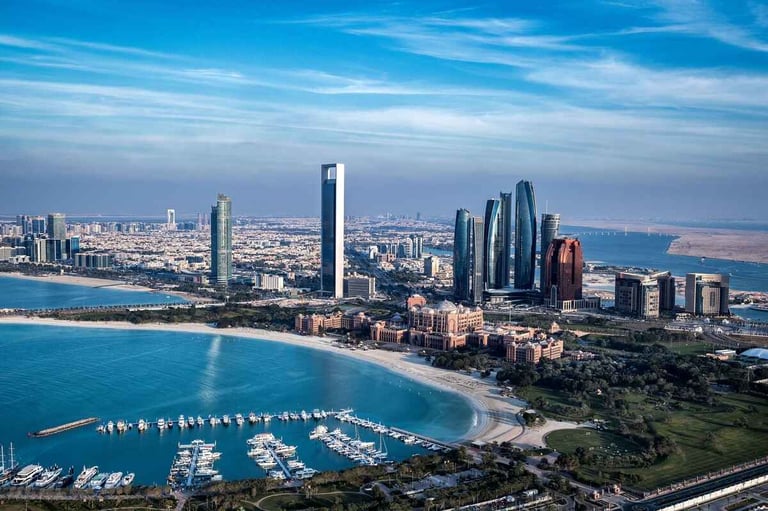The UAE recently marked a milestone in heritage preservation as the UNESCO World Heritage Committee officially inscribed Sharjah’s Faya Palaeolandscape on the World Heritage List. Recognized under the Cultural Landscape category, Faya was the only Arab site added this year and the second from the UAE after Al Ain’s cultural sites were inscribed in 2011.
The cultural heritage property, situated in the emirate’s central region, was recognized for its outstanding universal value (OUV) for holding one of the world’s oldest and most continuous records of early human presence in arid environments over 200,000 years.
Faya’s inscription brings the total number of World Heritage sites to 1,226 across 168 countries, including 955 cultural, 231 natural, and 40 mixed sites. The Arab region now hosts 96 such sites across 18 countries.
What is the Faya Palaeolandscape, and what makes this ancient desert site worthy of being on the World Heritage List?
1. First desert Paleolithic site on the list
The Faya Palaeolandscape is an intact fossil desert landscape. Faya’s critical role as a repeated destination for habitation has fundamentally altered the understanding of prehistoric life in Southeast Arabia and represents a significant milestone in human evolution. This is what makes the inscription of Faya on the World Heritage List extremely significant.
Until the inscription of Faya, desert Paleolithic sites were not represented in the World Heritage List.
2. Only Arab nomination
Under the Cultural Landscape category this year, the Faya Palaeolandscape was the only Arab nomination considered by the World Heritage Committee, making this achievement even more historic and meaningful for Sharjah, the UAE and the wider region.
Faya now stands as the second site in the UAE to receive this recognition, after The Cultural Sites of Al Ain inscribed in 2011. The inscription of the Faya Palaeolandscape globally affirms Sharjah’s and the UAE’s place as a cradle of early human history.
There are currently 96 UNESCO World Heritage Sites inscribed across the Arab States region, spanning a total of 18 different countries.

3. 18 distinct archaeological layers
Deserts represent 20 percent of global habitats. They are located at critical waypoints of humanity’s journey to the colonization of the entire planet. Their settlement reflects a critical chapter of humanity’s past. Unlike areas traditionally viewed as mere corridors for human migration, decades of interdisciplinary research at the Faya Palaeolandscape have revealed it as a repeated destination for habitation, fundamentally altering the understanding of prehistoric life in Southeast Arabia.
Over 30 years of meticulous excavations, led by the Sharjah Archaeology Authority (SAA) in collaboration with international institutions such as the University of Tübingen, which specializes in prehistoric archaeology, and Oxford Brookes University’s department of palaeoenvironment study, have uncovered 18 distinct archaeological layers.
Located between the Persian Gulf and Arabian Sea, the property preserves evidence of human occupation from the Middle Palaeolithic and Neolithic periods (210,000–6,000 years ago). The archaeological layers reveal how hunter-gatherers and pastoralists adapted to extreme climates, alternating between arid and rainy periods every 20,000 years.
Beyond subsistence activities, early human groups utilized the site’s geomorphological features for resource extraction. With diverse water sources and raw materials, Faya provides valuable insights into human resilience in hyper-arid environments.
4. Uninterrupted record of over 210,000 years of human habitation
The Faya Palaeolandscape has become a global reference point in palaeoanthropology and archaeology, placing the UAE at the center of international scientific discourse on human origins. The property’s uninterrupted record of over 210,000 years of human habitation has made it a key contributor to the evolving narrative of early life in Southeast Arabia.
“Its archaeological record — spanning more than 210,000 years — reveals unprecedented insights into toolmaking, burial practices, and shifting lifestyles in response to climatic extremes. Faya challenges long-held assumptions and affirms that the Arabian Peninsula was not merely a corridor, but a cradle of human evolution in its own right. It demonstrates that early societies did not just pass through this region — they thrived here, innovated, and laid cultural and social foundations that deepen our understanding of human resilience,” said Eisa Yousif, director-general of the Sharjah Archaeology Authority (SAA).

5. One of the few documented Stone Age desert landscapes
As one of the few documented Stone Age desert landscapes in the world, the Faya Palaeolandscape provides exceptional evidence of early modern human adaptation to hyper-arid environments over tens of thousands of years. From the earliest hunter-gatherer communities to pastoral nomadic herders with funeral practices, the archaeological record at Faya reveals how humans evolved socially, technologically and spiritually in response to extreme and changing climates.
Beyond its regional significance, the property contributes to a larger global understanding of how early humans navigated survival, resource management, and social development in some of the harshest conditions on Earth. The sediment layers and preserved palaeoenvironmental features at Faya have made it a key site for understanding water availability, vegetation distribution and climatic shifts during the Late Pleistocene and Holocene epochs.
Future plan for Faya
The UAE and Sharjah have established a robust management and conservation plan (2024–2030) for the Faya Palaeolandscape. This initiative aims to uphold the site’s Outstanding Universal Value according to UNESCO standards, while being continually committed to promoting research, education and sustainable tourism. It serves as a prime example of integrating heritage preservation with scientific exploration and community involvement
This commitment is also demonstrated in Sharjah’s past efforts in this field. For 11 years, Faya Paleolandscape has been a cornerstone site within UNESCO’s Human Evolution, Adaptations, Dispersals and Social Developments (HEADS) Program, alongside iconic sites like Klasies River Caves and Wonderwerk Cave in Africa. This long-standing partnership between UNESCO and Faya Paleolandscape underscores the site’s role in advancing global palaeoanthropological research, environmental studies and international heritage cooperation.








